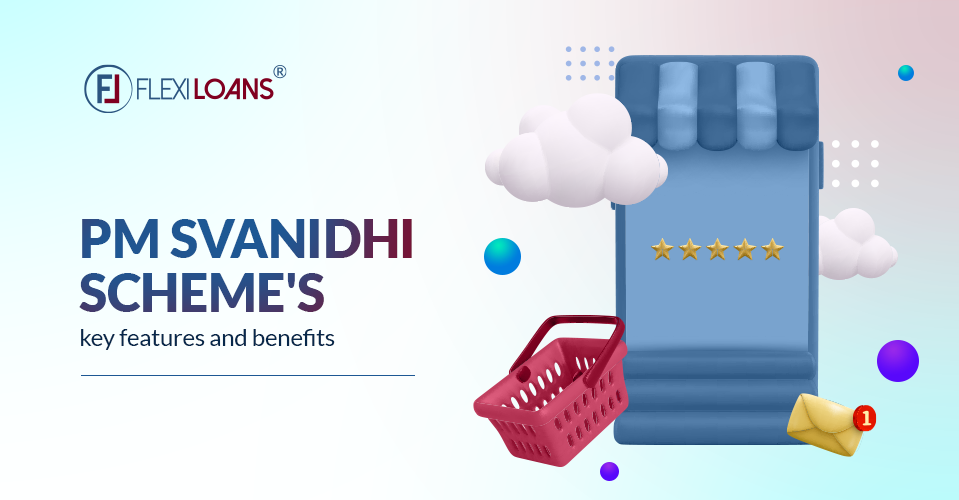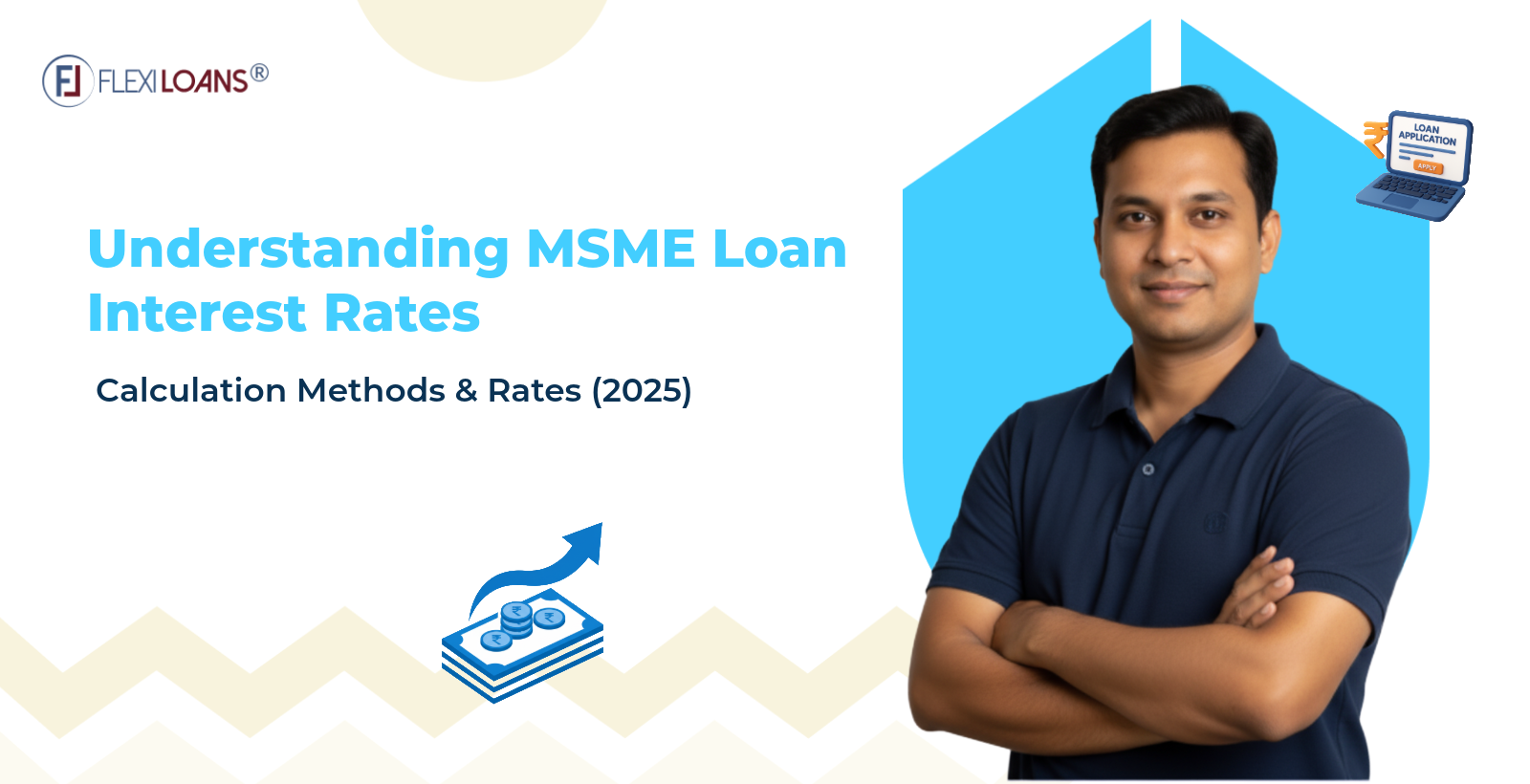Sep 20, 2023
Dec 12, 2025

Introduction to PM SVANidhi Yojana
Through the foundation of the ‘Make in India’ movement in 2014, the Indian government firmly set out on a journey to promote business, entrepreneurship, and self-sufficiency among the country’s public. Since then, the authorities have taken several steps to provide the public with financial as well as technical resources to help them realise this vision.
Schemes like the Pradhan Mantri Employment Generation Programme (PMEGP), Pradhan Mantri MUDRA Yojana (PMMY), and several others are making business and trade easier for India’s young, budding economy.
The PM SVANidhi Yojana is another such step in the direction of empowering the economy by providing finances for one of its most integral components: street vendors, also known as vendors or hawkers, and colloquially as thelewalas, rehriwalas, and theliphadwalas. Despite their apparent insignificance and hard working conditions, street vendors make up a massive part of almost any Indian market.
These individuals play a crucial role in ensuring that essential goods and services are readily available to urban residents at affordable prices, and conveniently accessible right at their doorsteps. Through SVANidhi Yojana, the government aims to help them grow and develop by offering suitable credit facilities.
What is PM SVANidhi Yojana?
The PM SVANidhi scheme, also known as the PM Street Vendor’s Atma Nirbhar Nidhi (SVANidhi) Scheme, is an initiative launched by the government of India. The primary objective of this initiative is to formalise the business structure for street vendors and provide them with access to financial resources to enhance their livelihoods.
The government aims to empower these individuals by offering them working capital loans and promoting their economic independence. The PM SVANidhi Yojana also encourages timely loan repayments by offering enhanced loan limits for eligible vendors in subsequent loan cycles.
Features of PM SVANidhi Yojana
The PM Street Vendor scheme has several notable features:
1. Collateral-free loans: Street vendors can avail of collateral-free working capital loans of up to Rs. 10,000. These loans allow them to meet their immediate business needs without having to pledge assets as security.
2. Digital payments: The scheme promotes digital transactions by incentivising street vendors to adopt digital payment systems. It provides eligible individuals with a monthly cashback of ₹100 on making digital transactions using prescribed digital payment platforms. Vendors can also complete the registration and application for the PM SVANidhi Yojana online, which further promotes digitisation.
3. Interest subsidies: Vendors who repay their loans on time are eligible for an interest subsidy of 7%. This reduces the financial burden and incentivises timely repayments.
4. Loan tenure: Street vendor loans provided under the scheme have a tenure of one year and vendors have the flexibility to repay the amount in monthly instalments or as a single payment at the end of the tenure.
5. ID cards: The PM SVANidhi Yojana facilitates the issuance of physical or digital identification cards for street vendors. This helps in formalising their status as recognised vendors and provides them with various benefits and protections.
6. Insurance coverage: The scheme provides hawkers with access to affordable accident insurance coverage of Rs. 10,000. This offers them a safety net in case of unforeseen accidents or mishaps.
7. Skill development: The PM SVANidhi Yojana focuses on empowering street vendors by providing skill development and capacity-building training. This enhances their entrepreneurial abilities, financial literacy, and business management skills.
8. Integration with other schemes: The scheme aims to integrate street vendors with other government initiatives. This includes linking them to social security schemes, health insurance programs, and other welfare benefits.
9. Nodal agencies: Various nodal agencies implement the PM SVANidhi Yojana at the national, state, and municipal levels. These agencies are responsible for facilitating the loan application process, conducting surveys, and providing support to street vendors.
Objectives of PM SVANidhi Yojana
The PM SVANidhi scheme aims to bring about positive change in the lives of street vendors, promote their economic growth, and integrate them into the formal economy. It does so through these objectives:
1. Financial inclusion: The scheme aims to provide access to formal credit facilities for street vendors who are typically excluded from the formal financial system. It enables them to avail of street vendor loans to meet their business needs.
2. Poverty alleviation: By extending financial support to street vendors, PM SVANidhi Yojana aims to uplift their economic status and contribute to poverty reduction. It empowers them to enhance their income and improve their standard of living.
3. Formalisation: The scheme aims to formalise the street vending sector by providing vendor identification cards and promoting compliance with regulations. This helps in recognising street vendors as legitimate businesses and provides them with access to various government schemes and services.
4. Skill development: PM SVANidhi Yojana focuses on providing skill development and capacity-building training to the country’s hawkers. It aims to enhance their entrepreneurial abilities, financial literacy, and business management skills, enabling them to operate more effectively.
5. Digitalisation: The scheme encourages vendors to adopt digital payment systems, promoting a cashless economy and facilitating transparent transactions. It aims to create awareness and facilitate the use of digital platforms for financial transactions among street vendors and their customers.
6. Social security: PM SVANidhi Yojana aims to provide social security coverage to street vendors by offering access to affordable healthcare, pension schemes, and other welfare benefits. This helps in improving their overall wellbeing and providing a safety net in times of need.
7. Empowerment of women: The scheme gives special emphasis to women street vendors and aims to empower them by providing equal opportunities and support for their entrepreneurial endeavours.
Eligibility criteria for the PM SVANidhi Yojana
Vendors will need to meet the following eligibility criteria to qualify for this scheme:
1. Date: PM SVANidhi Yojana is specifically designed for street vendors – including hawkers, small shop owners, cart vendors, and mobile vendors – engaged in vending activities as of or before March 24, 2020.
2. Vendor certification: Hawkers should possess valid identification proof issued by the concerned urban local body (ULB) or town vending committee (TVC). This certification serves as proof of their vending activity and is a prerequisite for availing of the benefits of the scheme.
3. Age limit: There is no specific age limit for availing of the benefits of the PM Street Vendor scheme. Hawkers of all age groups can apply provided they meet the other eligibility criteria.
4. Aadhaar number: Vendors need to possess a valid Aadhaar card for identification purposes and to establish their identity during the application process.
5. Business Location: Vendors should have a permanent vending stall or cart in a designated vending zone or area identified by the respective ULB or TVC. The scheme primarily targets vendors operating in urban and semi-urban areas.
6. Loan default: Vendors who have not previously defaulted on funding provided by banks or financial institutions can apply for the scheme’s street vendor loan.
Subsidies provided by the PM SVANidhi Yojana
The subsidy rates are as follows:
- Interest subsidy: The PM Street Vendor scheme provides an interest subsidy at a rate of 7% per annum on working capital loans given to vendors. The subsidy operates on a reducing balance basis.
- Digital literacy: Street vendors who repay their loans on time are eligible for an additional subsidy of 1% per annum. This encourages and incentivises digital transactions, thereby promoting financial inclusion among street vendors.
It is important to note that the subsidy rates mentioned above are subject to change as per the guidelines and updates provided by the Ministry of Housing and Urban Affairs, which oversees the implementation of the scheme.
Interest rate on street vendor loans
Under the PM SVANidhi Yojana, the lending institutions involved determine the rates of interest on the loans provided to street vendors. These institutions may include banks, microfinance institutions, cooperative credit societies, and more. The guidelines for the interest rate are as follows:
- Banks: Scheduled commercial banks, regional rural banks (RRBs), small finance banks (SFBs), cooperative banks, and self-help group (SHG) lenders will follow their prevailing interest rates.
- Other institutions: Non-banking financial companies (NBFCs), NBFC microfinance institutions (MFIs), and other lender categories not covered under Reserve Bank of India (RBI) guidelines will adhere to RBI guidelines for NBFC-MFIs.
PM SVANidhi Yojana Pre-Application Procedure
The procedures outlined here will guarantee that you are prepared to begin the registration procedure on the site.
1. Look for your name on the vendor survey list and make a note of your Survey Reference Number (SRN).
2. Carry a copy of the coefficient of variation (COV) or identification card on hand for uploading throughout the application procedure.
3. The system will generate a Preliminary COV for you when you submit an online form.
4. Save a copy of the Letter of Recommendation (LOR) for filing.
5. The Vendor must state at least one of the following:
During the pandemic shutdown, the seller got One-Time Assistance. The seller must be a member of a hawkers/vendors organisation.
Pm Svanidhi Yojana Online Registration
Post completion of the aforementioned procedure, you must be able to access the login using your account utilising the PM SVANidhi login method described above. Candidates need to use their cellphone number to begin the PM SVANidhi registration procedure. Other organisations, on the other hand, will have to commence and complete the PM SVANidhi login procedure using a username and password generated for them on the website.
PM Sannidhi Yojana Apply Online
Step one: Open http://pmsvanidhi.mohua.gov.in/ the official webpage.
Step two: After that, you must obtain the PM SVANidhi Scheme Financing Registration Form.
Step three: Choose the merchant category for which you are eligible.
Step four: Completing the Loan Application Form (LAF). Your Aadhaar must be connected to your cell phone number.
Step five: After completing all of the required information, submit the application form.
How to Check Your PM SVANidhi Application Status
Follow these procedures to verify the status of your application:
- Visit the PM SVANidhi webpage at https://pmsvanidhi.mohua.gov.in/.
- Select the ‘Street Vendor Survey Search’ tab.
- Enter the required information such as State, Certificate of Vending No., Vendor-Id Card Number, Name of Street Vendor, ULB Name, Mobile Number, and Father’s Name/Spouse Name.
- Once completed, you may check the progress of your survey by clicking ‘Search.’
Login Procedure for PM SVANidhi
One may only begin the PM SVANidhi authentication and authorization if they have previously applied for the scheme’s incentives as either a creditor or as a beneficiary. After that, the user can proceed with the steps outlined to begin the PM SVANidhi login process:
- When you go on the legitimate PM SVANidhi website, click the “Login” icon to begin the PM SVANidhi login procedure.
- The next stage in the PM SVANidhi login procedure will ask you to provide the login details you provided when you applied. You can start the procedure as a creditor or as a beneficiary.
- Then you will be asked to create an OTP. Press the link that enables you to do that.
- You will receive an OTP within moments. Enter it into the empty fields on your laptop screen to complete the PM SVANidhi login procedure. After you’ve gotten over that, you will be able to view the prospects for your part in the policy.
Promotion of digital transactions under the PM SVANidhi Yojana
The PM SVANidhi scheme promotes digital transactions by encouraging street vendors to adopt digital payment methods for their business transactions. The loans and financial assistance the scheme provides can be easily disbursed and repaid through digital platforms.
PM SVANidhi Yojana also offers training and guidance to hawkers on how to use various digital payment systems such as mobile wallets, UPI, and QR codes. By embracing such systems, vendors can attract a wider customer base, including those who prefer cashless payments.
Another benefit of digital transactions is that they enable street vendors to keep track of their sales, expenses, and financial records more efficiently, improving their overall business management. The PM street vendor scheme also encourages vendors to integrate with online marketplaces, expanding their reach and visibility to customers.
All in all, the promotion of digital transactions under this initiative contributes to the government’s vision of a cashless economy and fosters a more efficient and secure business environment for street vendors.
Why Choose FlexiLoans
Digitisation has made almost everything available at the tips of our fingers, and it is now also possible to access business finance online, through FlexiLoans. We know the importance of the dreams of the entrepreneurs of our country and so, we have developed a range of business loans to fit every business’s needs.
Be it to restock your inventory or to refinance past debts, our collateral-free loans with quick approval and minimal documentation are easy to access. Apply now and finance your business dreams with FlexiLoans.
FAQs
The PM SVANidhi Yojana, also known as the PM Street Vendor’s Atma Nirbhar Nidhi (SVANidhi) Scheme, is a government initiative that aims to ensure finance is easily available to street vendors so they can manage and grow their business organically. The scheme also encourages timely repayment habits by offering enhanced loan limits for eligible vendors in subsequent loan cycles.
Street vendors and hawkers engaged in vending articles, goods, wares, food items or merchandise of daily use, or who offer services to the public on a street, footpath or pavement from a temporary built-up structure or by moving from place to place can apply for a street vendor loan under the PM SVANidhi scheme.
Cooperative banks, non-banking financial corporations, microfinance institutions, scheduled commercial banks, regional rural banks, small finance banks, and self-help groups can offer small credit loans under the PM SVANidhi Yojana.
PM SVANidhi street vendor loans are collateral-free, which means you do not need to pledge assets in return for the funding.
Under the PM Street Vendor scheme, loan approval may take up to 30 days depending on the accuracy of the documents. The automated process carried out through the mobile app or website helps vendors check the status of their loan applications in real time.
Under the PM street vendor scheme, you can get up to Rs. 10,000 through an initial working capital loan.
The PM SVANidhi scheme has varying interest rates applicable on street vendor loans:
Banks: Scheduled commercial banks, regional rural banks (RRBs), small finance banks (SFBs), cooperative banks, and self-help group (SHG) lenders will follow their prevailing interest rates.
Other institutions: Non-banking financial companies (NBFCs), NBFC microfinance institutions (MFIs), and other lender categories not covered under Reserve Bank of India (RBI) guidelines will adhere to RBI guidelines for NBFC-MFIs.
Ans: You can apply for a PM SVANidhi street vendor loan online through the official government website or through the scheme’s mobile app.
Latest News Updates on PM SVANidhi Yojana
June 29, 2023: The PM SVANidhi Yojana, which the government of India launched in 2020, has now been extended until December 2024. The Brihanmumbai Municipal Corporation (BMC) has urged street vendors who have not yet taken advantage of the scheme to get in touch with their local ward office. As of now, the civic body has provided loans of Rs. 10,000 each to 90,000 hawkers as part of this initiative.
June 28, 2023: During a review of the PM SVANidhi scheme, Prime Minister Narendra Modi called upon the state governments to actively identify and include all eligible street vendors in urban areas, particularly in Tier II and Tier III cities. He emphasised the need for a focused and comprehensive drive to promote digital transactions among these vendors under the PM Street Vendor scheme.
The prime minister also directed the chief secretaries of various states to ensure that the family members of the scheme’s beneficiaries receive the benefits of other government schemes through the SVANidhi se Samriddhi campaign.
June 12, 2023: According to data provided by the Union Ministry of Housing and Urban Affairs, out of the total beneficiaries (36.33 lakhs) under the PM SVANidhi Yojana, 21.31 lakh vendors are men, 15.02 lakh are women, and 219 beneficiaries are from the ‘others’ gender category.
Notably, in 10 states and Union territories, predominantly in the Southern and Northeast regions, women represent the majority of the beneficiaries. Andhra Pradesh has 70% women beneficiaries, Telangana has 66%, Tamil Nadu has 64%, and Karnataka has 50%. The cumulative number of women beneficiaries in Andhra Pradesh, Telangana, Tamil Nadu, and Karnataka amounts to 5,80,956, which is nearly 39% of the total 15,02,597 women beneficiaries of the scheme nationwide.
June 02, 2023: Minister for Housing and Urban Affairs Hardeep Singh Puri recently commended the PM Street Vendor’s AtmaNirbhar Nidhi scheme for reaching a significant milestone of three years. Within this short span, the scheme has successfully provided microcredit to over 3.6 million street vendors across the nation.
By June 30, 2023, AtmaNirbhar Nidhi had disbursed more than 4.64 million loans, totaling a cumulative amount of Rs. 5,795 crores. This noteworthy accomplishment highlights the substantial impact of the scheme in empowering the livelihoods of these vendors.
June 01, 2023: Minister for Housing and Urban Affairs Hardeep Singh Puri has launched a mobile app for the PM SVANidhi Yojana, aimed at simplifying the loan application process and providing street vendors with information about the scheme.
During an event in New Delhi, the minister praised the street vendor scheme on its completion of three years and highlighted that it has been one of the fastest-implemented government initiatives, leading to remarkable financial inclusion and digital literacy in the country’s cities and towns. Puri added that the scheme is playing a crucial role in providing street vendors with dignity, stability, and economic opportunities.







